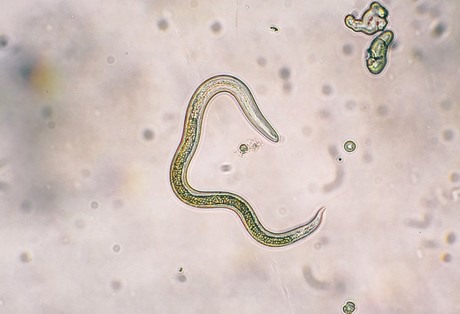Nematodes are microscopic round worms that are not visible to the human eye and are the most abundant members of the animal kingdom on Earth. There are over 25,000 known species that can be found around the world in the Arctic, deserts and deep in the ocean, but most dwell in outdoor soils. Many of these species feed on bacteria, fungi, algae, other nematodes, or insect larvae. In fact, Steinernema feltiae is a common nematode that is used to control fungus gnats and western flower thrips larvae in soils or growing media.

Root-knot nematode as seen through a microscope. Source: thriftyfun.com
Although many nematodes are beneficial, there are some species that are herbivores and are therefore plant parasites that feed on plant roots, leaves or stems. Some nematodes are host-specific and feed off a small number of plant species, while most have a wide host range. Although it is highly unusual to find parasitic nematodes in professional growing media, they can be accidentally introduced.
The focus of this article by Promix is to discuss the most common parasitic nematodes, root-knot nematodes.
